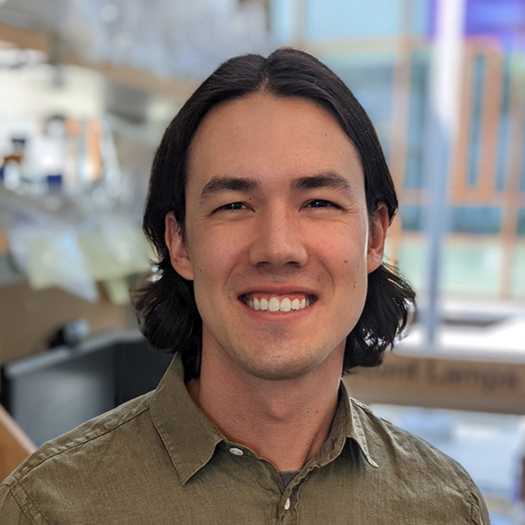Apr 30, 2025
16S and 18S rRNA mock community construction
- Rob Lampe1,2,
- Ariel Rabines1,2,
- Bryce Ellman1,2,
- Hong Zheng1,2,
- Andrew E Allen1,2
- 1Scripps Institution of Oceanography;
- 2J. Craig Venter Institute
- A.E. Allen Lab

Protocol Citation: Rob Lampe, Ariel Rabines, Bryce Ellman, Hong Zheng, Andrew E Allen 2025. 16S and 18S rRNA mock community construction. protocols.io https://dx.doi.org/10.17504/protocols.io.8epv5r19dg1b/v1
License: This is an open access protocol distributed under the terms of the Creative Commons Attribution License, which permits unrestricted use, distribution, and reproduction in any medium, provided the original author and source are credited
Protocol status: Working
We use this protocol and it's working
Created: April 10, 2024
Last Modified: April 30, 2025
Protocol Integer ID: 98029
Keywords: mock communities, marine microorganisms, metabarcoding, sequencing, standards, external standards, amplicon sequencing, DNA, rRNA gene
Funders Acknowledgements:
National Oceanic and Atmospheric Administration
Grant ID: NA19NOS4780181
National Science Foundation
Grant ID: OCE-2224726
Simons Foundation
Grant ID: 970820
Abstract
Mock communities are defined mixtures of cells or DNA for methods development, testing, or validation. Here we present mock communities based on previously used 16S and 18S rRNA gene sequences from diverse marine microorganisms. Their use as controls for amplicon sequencing enables detection of biased or aberrant runs.
Attachments
Materials
- Stock plasmids containing individual 16S or 18S sequences (see spreadsheet)
- PCR reagents: NEB OneTaq 2X Master Mix with Standard Buffer (Cat no. M0482)
- PCR and gel clean up kits: Zymo DNA Clean & Concentrator (D4013), NucleoSpin Gel and PCR Clean-up XS kit (Cat. no. 740611), Zymoclean Gel DNA Recovery Kit (Cat. no. D4001)
- Qubit dsDNA, High Sensitivity (Q32851 or Q32854)
The kits listed here simply describe the ones used for the creation of our mock communities and may be subsituted for others that serve the same role.
Obtain plasmids
Obtain plasmids
The stock plasmids were synthesized by Twist with the Kan High Copy vector and rehydrated to 40 ng/µL in low-EDTA TE Buffer. Use 1:10 dilutions of the stock plasmids (~4 ng/µL) for the first PCR.
First PCR of inserts
First PCR of inserts
Set up25 µL PCR reactions with M13 primers and NEB OneTaq 2X Master Mix with Standard Buffer:
| Reagent | Volume (µL) | |
| 10 uM M13 Forward Primer | 1 | |
| 10 uM M13 Reverse Primer | 1 | |
| Master Mix | 12.5 | |
| Template DNA | 1 | |
| Water | 10.5 |
Run PCR with the following conditions:
| Step | Temp (°C) | Time | |
| Initial Denaturation | 94 | 30 seconds | |
| 25 cycles | 94 | 30 seconds | |
| 55 | 1 minute | ||
| 68 | 2 minutes | ||
| Final Extension | 68 | 5 minutes |
Run PCR products on a gel to confirm successful amplification. Most samples are cleaned up with the Zymo DNA Clean-up and Concentrator Kit following the manufacturer's instructions. Perform the final elution in 50 µL of elution buffer and prepare 1:10 dilutions in 50 µL with molecular-grade H2O for the next PCR.
18S Sample 14 (3323) and the archael sequences (6445, 6446, 6447) are gel extracted with either the
Macherey-Nagel NucleoSpin Gel and PCR Clean-up XS kit (Cat. no. 740611) or Zymoclean Gel DNA Recovery Kit (Cat. no. D4001)
Second PCR of inserts
Second PCR of inserts
Set up PCR reactions as previously described with the following primers and annealing temperatures depending on the sequence type:
| Type | Forward Primer | Reverse Primer | Annealing Temp (°C) | |
| 16S Bacteria | 27F | 1492R | 55 | |
| 16S Archaea | 20F | 1392R | 54 | |
| 18S | EukA | EukB | 54 |
| Primer | Sequence (5' - 3') | |
| 27F | AGAGTTTGATCMTGGCTCAG | |
| 1492R | TACGGYTACCTTGTTACGACTT | |
| 20F | AGTTTGATCMTGGCTCAG | |
| 1392R | ACGGGCGGTGTGTRC | |
| EukA | AACCTGGTTGATCCTGCCAGT | |
| EukB | GATCCTTCTGCAGGTTCACCTAC |
27F/1492R: Heuer, Holger, et al. "Analysis of actinomycete communities by specific amplification of genes encoding 16S rRNA and gel-electrophoretic separation in denaturing gradients." Applied and environmental microbiology 63.8 (1997): 3233-3241.
20F/1392R: Lane, D. J. "16S/23S rRNA sequencing." Nucleic acid techniques in bacterial systematics (1991).
EukA/EukB: Medlin, Linda, et al. "The characterization of enzymatically amplified eukaryotic 16S-like rRNA-coding regions." Gene 71.2 (1988): 491-499.
Perform clean-ups again with the Zymo DNA Clean-up and Concentrator Kit. Perform the final elution in 50 µL . Here the archael sequences are gel extracted again.
Quantification, dilution, and mixing
Quantification, dilution, and mixing
Quantify the cleaned-up PCR product in duplicate with the Qubit dsDNA High Sensitivity (HS) assay kit.
(optional) Perform sanger sequencing with the second PCR primers for validation. This was performed with the construction of our mock communities.
Using the recipe spreadsheets, enter the concentrations, prepare dilutions, and mix accordingly. The expected ratios are also included in these spreadsheets. The final mock communities are also then serially diluted to approximately 0.01 ng/µL.
(optional) Confirm successful amplication following the PCR conditions and primers used for amplicon library prepartion with both the diluted PCR product and mixtures. This was performed with the construction of our mock communities.
Protocol references
Parada AE, Needham DM, Fuhrman JA. 2016. Every base matters: assessing small subunit rRNA primers for marine microbiomes with mock communities, time series and global field samples. Environ Microbiol 18:1403-1414.
Yeh Y-C, McNichol J, Needham DM, Fichot EB, Berdjeb L,Fuhrman JA. 2021. Comprehensive single-PCR 16S and 18S rRNA community analysis validated with mock communities, and estimation of sequencing bias against 18S. Environ Microbiol 23:3240-3250.
Acknowledgements
We are grateful to Dr. Jed Fuhrman and members of his laboratory who previously shared the mock communities that the ones used here are based on.


